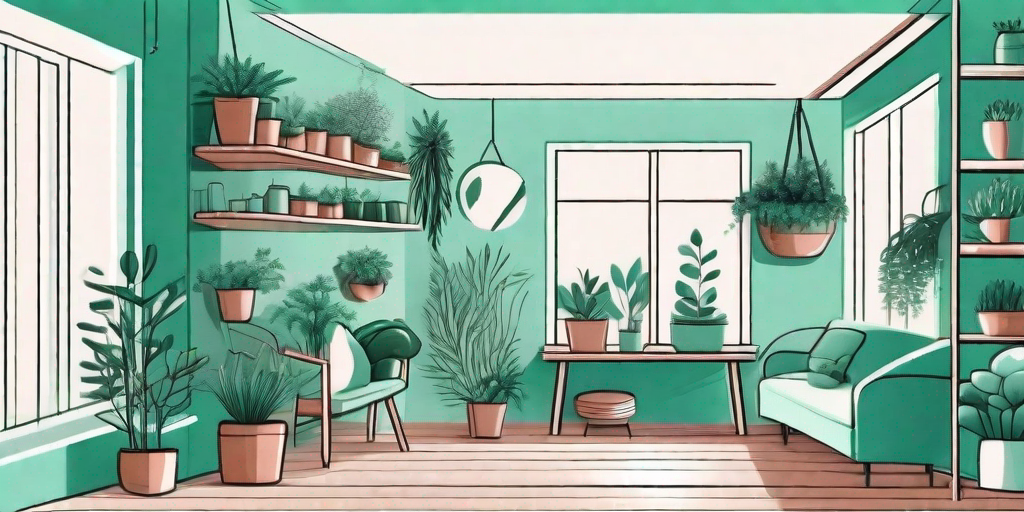
If you're looking to breathe some life into your home, you've come to the right place. Plants are the perfect way to add a touch of nature to your living space. But, where to put them? Well, buckle up, green thumb enthusiasts, because we're about to embark on a botanical journey.
Understanding Your Plant's Needs
Before we dive into the nitty-gritty of plant positioning, we need to understand what our leafy friends need. Just like humans, plants have their own set of needs and preferences. Some like it hot, some like it cool, some like it sunny, and some prefer the shade. It's not a one-size-fits-all situation.
So, the first step in greening up your home is to get to know your plants. Do they need a lot of sunlight or just a little? Do they prefer humid or dry conditions? Understanding these needs will help you find the perfect spot for your plant.
Light Requirements
Plants need light to photosynthesize, which is a fancy way of saying they need light to eat. Some plants, like succulents and cacti, love basking in the sun all day. Others, like ferns and ivy, prefer indirect light or shade.
So, when choosing a spot for your plant, consider the light conditions. A sunny windowsill might be perfect for your cactus but could spell disaster for your fern.
Temperature and Humidity
Just like us, plants can be a bit picky about the temperature and humidity. Tropical plants, for example, love warm and humid conditions. So, they might do well in a bathroom or kitchen. On the other hand, desert plants prefer dry and hot conditions.
Remember, it's not just about the light. Temperature and humidity can make or break your plant's happiness.
Best Places to Position Your Plants
Now that we've covered the basics of plant care, let's get down to business. Where should you put your plants? Here are some suggestions.
Remember, these are just guidelines. The most important thing is to observe your plant and adjust its position as needed. If it's not thriving in one spot, don't be afraid to move it to another.
The Living Room
The living room is often the heart of the home, and it's a great place for plants. With plenty of natural light and a stable temperature, it's ideal for a variety of plants. Consider placing a large, leafy plant in a corner to add a touch of greenery. Or, place smaller plants on shelves or tables to create a layered look.
Just remember to keep your plants away from drafts, heaters, and air conditioners. These can cause sudden changes in temperature, which most plants don't appreciate.
The Kitchen
The kitchen can be a great place for plants, especially herbs. Imagine having fresh basil, rosemary, or thyme at your fingertips whenever you cook. Plus, the humidity from cooking can be beneficial for many plants.
Just be sure to keep your plants away from the stove and other heat sources. And remember, not all plants are edible, so keep any toxic plants out of reach of children and pets.
The Bathroom
Believe it or not, the bathroom can be a plant paradise. The humidity from showers and baths can create a mini tropical environment, perfect for ferns, orchids, and other humidity-loving plants.
Just make sure your bathroom has enough light. If it doesn't, consider using a grow light to supplement.
FAQs
What if I don't have a lot of natural light?
Don't fret, shade-loving plants are here to save the day. There are plenty of plants that thrive in low light conditions. Consider snake plants, pothos, or ZZ plants. They're all low-light champions.
Can I put plants in my bedroom?
Absolutely! In fact, some plants, like the snake plant, are known to purify the air and even produce oxygen at night. Just make sure your bedroom has enough light for your chosen plant.
How often should I move my plants?
Generally, it's best to avoid moving your plants too often. However, if you notice your plant isn't thriving, it might be time for a change of scenery. Just remember to move your plant gradually to avoid shocking it.
Conclusion
And there you have it, folks. The ins and outs of plant positioning. Remember, the key is to understand your plant's needs and observe its response to its environment. With a little patience and care, you can create a lush, green oasis in your home. So go forth, position those plants, and let the greening begin!















